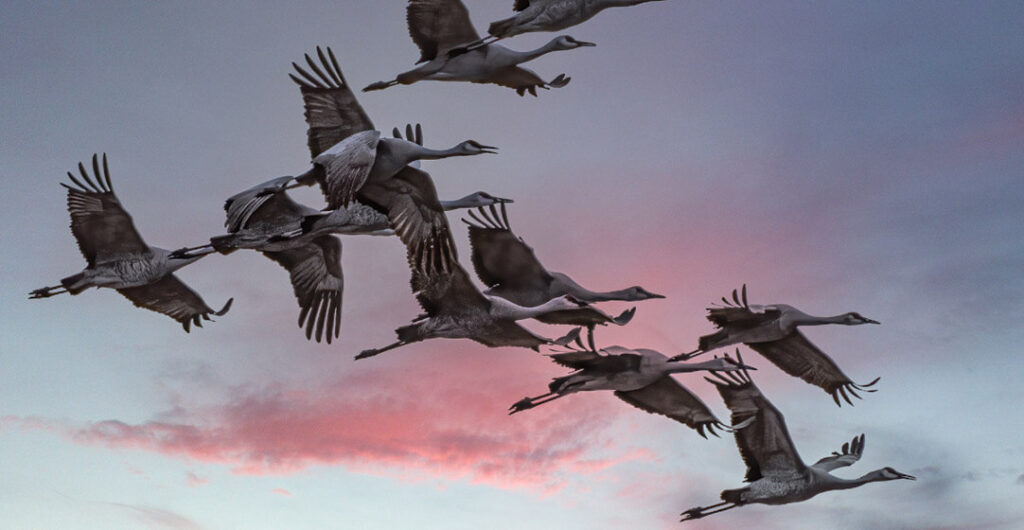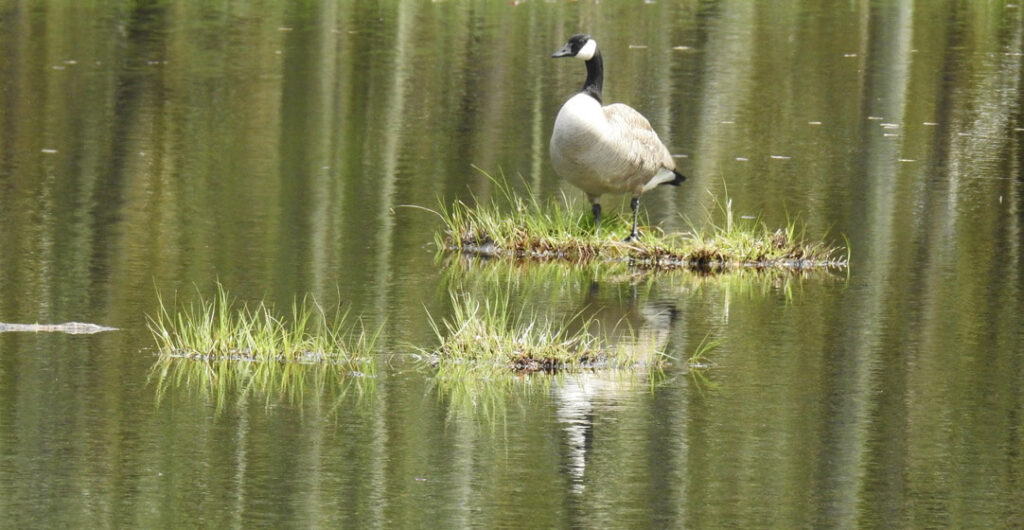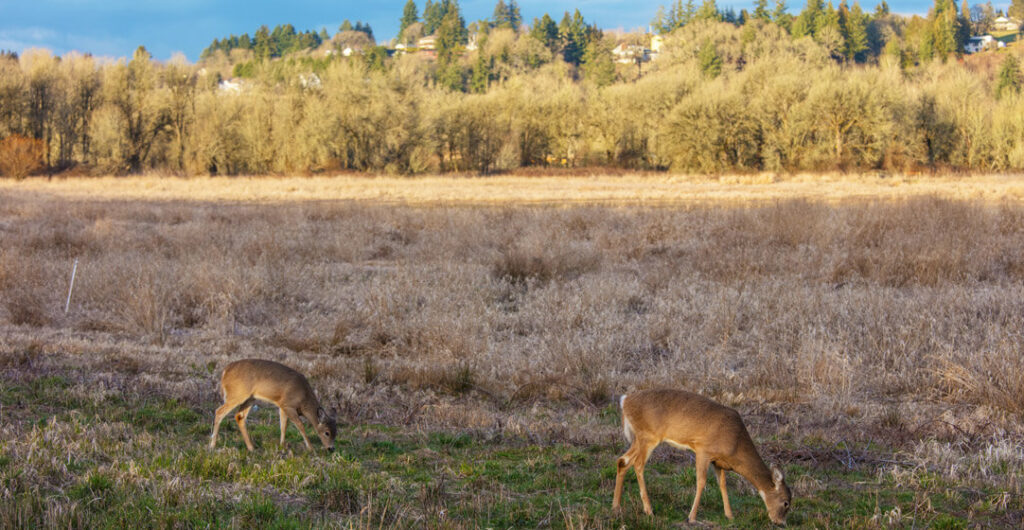See Birds and Animals in their Natural Habitat
Looking for a memorable outdoor experience that is not too far away or expensive? Why not try visiting one of Washington’s two dozen national wildlife refuges. See thousands of birds and animals in a beautiful setting on walking paths or from your car.
Gasoline prices and other travel expenses got you down? Having second thoughts about that long drive this summer across the Cascades, the Oregon Coast, Yosemite or Disneyland? Washington’s wildlife refuges offer scenic destinations you can visit on a day trip while getting memorable outdoor experiences.
Wild animals are what refuges are all about, so leave your pets, sports equipment, rollerblades, et cetera, at home. Wear good walking shoes although the trails are mostly level and wheel-chair accessible. You might bring binoculars, snacks and water.
In any case, bring an interest in seeing wild animals in their natural habitat. The refuges are a temporary or permanent home to migratory waterfowl, including cranes, swans, geese and ducks, raptors and countless varieties of shore birds. The mammals vary with the site, but they range from moose to mink, bear to beaver and coyotes to Columbian white-tailed deer.
There are two-dozen national wildlife refuges in Washington alone, some with multiple sites. They welcome visitors, charge little — if anything — and, in most cases, have trails, designated viewing points, restrooms and informational signage. Some include souvenir shops/bookstores and picnic tables. At least three have auto-tour routes.
Here are seven national refuges in Washington that are well worth a visit.

Little Pend Oreille
Little Pend Oreille is the largest of Washington’s national wildlife refuges and one of its most varied in landscape and mammals, including moose, elk, cougar, wolves, bear and beaver.
Located 75 miles north of Spokane, it’s also one of the most remote of the state’s federal refuges. Limited lodging is available 13 miles away in Colville but there are camping and RV sites throughout the area, including the Colville National Forest. State Route 20, Washington’s northernmost cross-state highway, passes nearby.
Elevation within the 40,500-acre refuge ranges from 1,800 feet on the west side to 5,600-foot Olson Peak in the Selkirk Range on the east. The U.S. Fish and Wildlife Service “USFWS” says it’s the only mountainous, mixed-conifer-forest national refuge in the country outside of Alaska.
“Refuge lakes and marshes provide a spring and fall stopover point for migratory waterfowl,” says Brent Lawrence, USFWS regional spokesman. “Best viewing is typically dawn and dusk.”
A 10-mile auto-tour route open April 15 through Dec. 31 starts at the refuge headquarters. It includes 12 interpretive stops with illustrated panels and several wildlife-viewing sites.
Turnbull
At Turnbull, swans and diving ducks (ruddy, redheads, buffleheads and ring-necks) are a specialty. They spend warmer months on Turnbull’s 130 lakes, marshes and wetlands then head south for the winter. The swans especially “are a big thing here,” Refuge Manager Lisa Wilson says.
But perhaps the real stars of the show at this 20,000-acre refuge located 22 miles south of Spokane are the moose. “They’re here year-around and easy to spot most days,” Wilson says. “They might not be alongside the road, but they’re visible in the grass if you look for them.”
Numerous varieties of smaller animals and wildflowers are also prominent at Turnbull, and there’s a geological attraction. The refuge is on the eastern edge of the Channeled Scablands that were carved out of ancient basalt by the Ice-Age Missoula Floods 15,000 to 18,000 years ago.
The public-use area includes a 5.5-mile auto-tour route and more than 10 miles of hiking trails. A store sells books and souvenirs on weekends from April to October.

Columbia
This refuge is a science two-fer: wildlife biology and Ice Age geology. This nearly 30,000-acre refuge near Othello (26 miles south of Moses Lake and I-90) attracts an array of migratory waterfowl and is a landscape disaster scene created by the Ice Age floods.
February and March is an especially good time to visit the Columbia National Wildlife Refuge. That’s when thousands of Sandhill Cranes famously lay over on their way north for the summer. The big, gangly birds are celebrated at Othello’s annual Sandhill Crane Festival, which in 2023 will be held March 24-26.
Wildlife here also includes a half-dozen varieties of ducks, geese, shrikes, great blue herons, harriers, nesting coots, American kestrels, red-tailed hawks, curlews, avocets and tundra swans. Among mammals are mule deer, marmots, coyotes and beaver.
USFWS, which operates the refuge, says the Ice Age floods that ravaged the area sent flood waters “greater than the flow of all the world’s rivers combined tearing across Eastern Washington’s lava fields, gouging coulees, redistributing boulders, depositing massive sand and gravel bars, scraping the land bare in some areas and leaving behind rich soils elsewhere. Nowhere are these depressions and geologic nooks more prevalent than on the refuge.”
Dungeness
The longest natural sand spit in the United States is part of the Dungeness National Wildlife Refuge at Sequim on the Olympic Peninsula, according to the USFWS. Cars are banned from the 5-mile-long spit, but hikers, birdwatchers, photographers and wildlife are welcome every day.
The Dungeness Spit is one of Washington’s most iconic sights. And it’s growing. Sand from an eroding bluff washes into the Strait of Juan de Fuca, which links the Pacific Ocean with Puget Sound and ends up on the spit, adding about 13 feet a year.
Atop that bluff is Dungeness Recreation Area, a Clallam County park that offers camping, picnicking, trails and spectacular views. Access to the spit is via a half-mile trail from the park or the nearby refuge parking area.
The refuge attracts many migratory waterfowl and resident birds, including bald eagles, black-bellied plover, black oystercatcher, pigeon guillemot, sandpiper, mallards and brant geese. Harbor seals often frolic just off the spit.
Kirk Dietz of the refuge staff says Dungeness Spit and Bay, with its abundant eelgrass, comes alive with avian wildlife during seasonal migrations.
Hikers who make the 10-mile round trip on the spit will see an operating lighthouse, built in 1857. It has restrooms and daily tours. A word of caution: A foul-weather hike on the spit can be unpleasant, if not dangerous, and tides of 6 feet or higher are best avoided.

Billy Frank Jr. Nisqually
This 3,000-acre refuge between Olympia and Tacoma is the most easily accessible of all the state’s refuges from the Seattle area. The Nisqually River, which begins 81 miles away on the southern flank of Mount Rainier, empties into Puget Sound here. USFWS describes the meeting of fresh and salt water as a “mosaic of different habitats” and “one of the state’s largest estuaries undisturbed by dredging and infilling.”
The refuge attracts at least 250 species of migratory and resident birds, including waterfowl, songbirds and raptors. It is also home to deer, coyote and seals, mink and raccoons.
For the full wildlife-viewing experience, the boardwalk trails should not be missed. There’s the mile-long Twin Barns Loop, with the option of an extension to a wildlife viewing platform, making for a roughly 5-mile round-trip, all on a level, gravel, wheel-chair accessible path.
.
“You never know what you’ll see out there,” Ranger David True says. “There are all kinds of animals and plants and an amazing habitat — high tides, low tides, fresh and salt water, an amazing mixture. Every day is different.”
A gift shop is open two to five days a week, depending on the season and staffing. There are a few picnic tables nearby.
Willapa
Willapa National Wildlife Refuge has two sections 25 miles apart at opposite ends of the Long Beach Peninsula, one of the state’s tourism magnets.
One section is on the north end at Leadbetter Point at the mouth of Willapa Bay. You can’t drive to Leadbetter Point. Here’s what the Washington Trails Association says about hiking to the point:
“Pay attention to wildlife. Black-tailed deer and raccoons are prevalent, but the main attraction is bird watching. Long Beach Peninsula is right in the path of the Pacific Flyway, the main thoroughfare for migrating waterfowl.” In addition to migratory waterfowl, the bird varieties include snowy plover, sanderlings, marbled murrelet, streak horned lark and bald eagles.
The starting point for a 3-mile loop trail or a 10-plus-mile hike to the tip of the peninsula is via Oysterville on the east side of the peninsula, then north to Leadbetter Point Park and another 1.5 miles to the trailhead.
The refuge’s other section is at the south end of the bay, east of downtown Long Beach. Muddy tidelands, freshwater marshes and old-growth cedar are dominant features of the south-end habitat, home to an array of shore birds, waterfowl, river otters, black bear, deer and elk. Six miles of trails are accessible from refuge headquarters. The 2022 Wings Over Willapa Festival will be Sept. 22–25.

Ridgefield
A highlight of this two-section refuge northwest of Vancouver is the 4-mile auto route on its River “S” (south) Unit where Columbian white-tailed deer are visible most mornings and early evenings year around.
The deer were on the federal Endangered Species List in 2014 when the first of 100 were moved here from near Cathlamet. Now, about 250 live on the refuge and their status has been down-listed to “threatened.”
The auto tour requires at least 30 minutes, but figure on an hour, depending on stops to watch wildlife or the wait for a family of geese to waddle across the road in front of you. Visitors on the auto tour are required to remain in their cars.
The other section of the refuge is the “Carty” (north) Unit, 2 miles north of downtown Ridgefield on Main Street. There, the viewing is done on foot, perhaps from the 2-mile Oaks to Wetlands Trail.
The refuge was established in 1965 to provide winter habitat for migratory waterfowl, especially Canada geese. Assistant Refuge Manager Eric Anderson said 30,000 or more birds are on the refuge during the late fall and winter. They include both tundra and trumpeter swans, ducks, sandhill cranes, and five subspecies of Canada geese (western, dusky, lesser, taverner and cackling; the western are year-around residents). Bald eagles also are regulars.
Native American history is also highlighted with a 78-by-37-foot replica of a Cathlapotle Plankhouse. It recognizes the Chinook Indians who lived along the Lower Columbia River more than 2,000 years before Lewis and Clark visited here in late 1805. The building is a quarter-mile walk from refuge headquarters. There are 2 miles of year-round trails in the Carty Unit and 3.5 miles in summer.
Getting to the River “S” (south) Unit: West from I-5 Exit 14 on Pioneer Street toward old town Ridgefield in 3 miles. When approaching downtown, turn left on S. 9th Ave./Hillhurst Road 0.6 miles to the refuge sign on right.
Getting to Carty (north) Unit: West from I-5 Exit 14 for 3 miles on Pioneer Street into downtown, then right on Main Street 1 mile. Refuge sign on left.
Other National Wildlife Refuges
Conboy Lake just south of Mount Adams near Glenwood in Klickitat County.
Copalis in Grays Harbor County is one of several separate refuges on the Olympic Peninsula coast from Cape Flattery to Copalis Head.
Grays Harbor at Hoquiam is one of four main stopover sites for shorebirds in the Northern United States.
Julia Butler Hansen Refuge for the Columbian White-Tailed Deer near Cathlamet on the Lower Columbia River.
Steigerwald Lake on the Columbia River at Washougal re-opened in May 2022 following major improvements to its trails, interpretive features and dikes.
Umatilla on both sides of the Columbia River south of the Tri-Cities near Irrigon, Oregon.
– Written by Gregg Herrington
– The top photo is of a moose at Turnbull National Wildlife Refuge. By Hanjo/AdobeStock

Road Trip Tips
Before you go: Get ready for your road trip with a AAA Membership. Get peace-of-mind on the road plus travel and insurance services and much more.
Save on hotels and rental cars: Unlock savings on hotels with a AAA membership. Plus, AAA members save up to 20% with Hertz.
Save on car insurance: AAA members save up to 8% on car insurance.
Get battery service: AAA Mobile Battery Service uses state-of-the-art technology to accurately diagnose battery-related problems. We’ll even replace your battery with a brand-new one if necessary, at a special member price.
Save with AAA member discounts: AAA membership gives you access to exclusive entertainment discounts nationwide.









